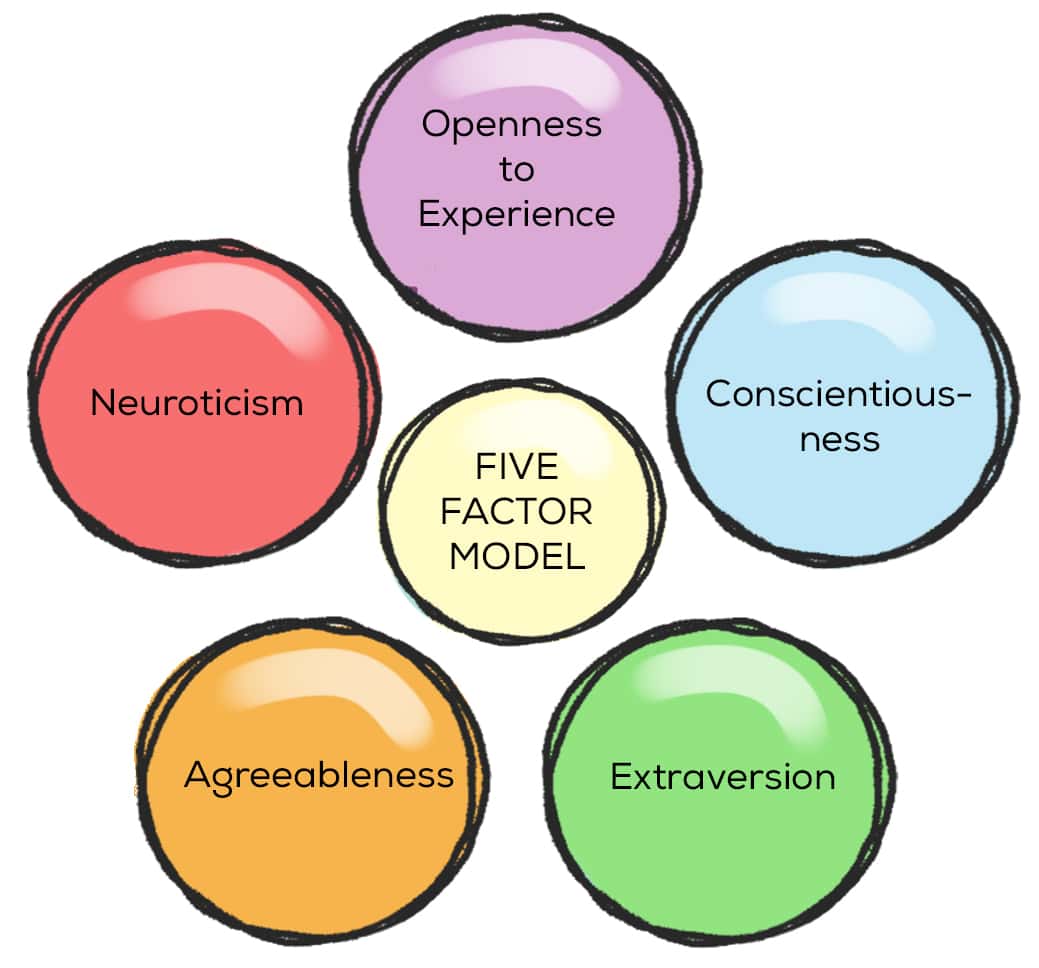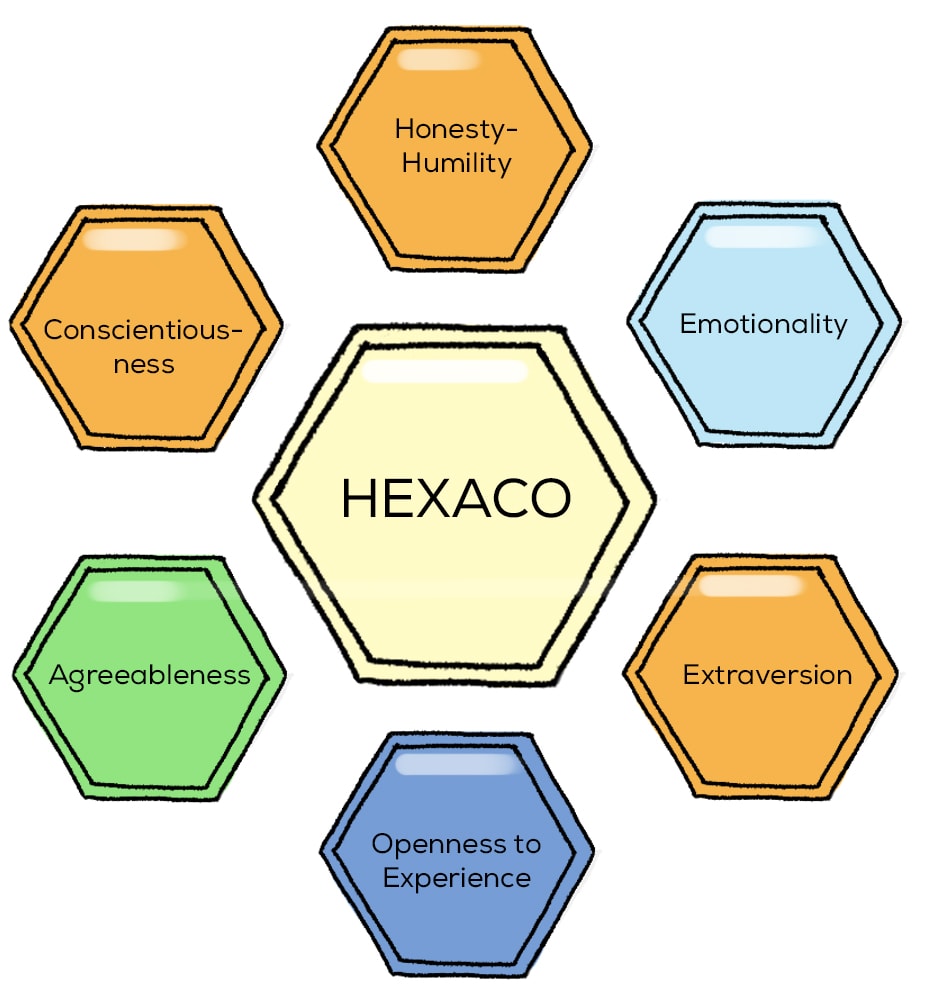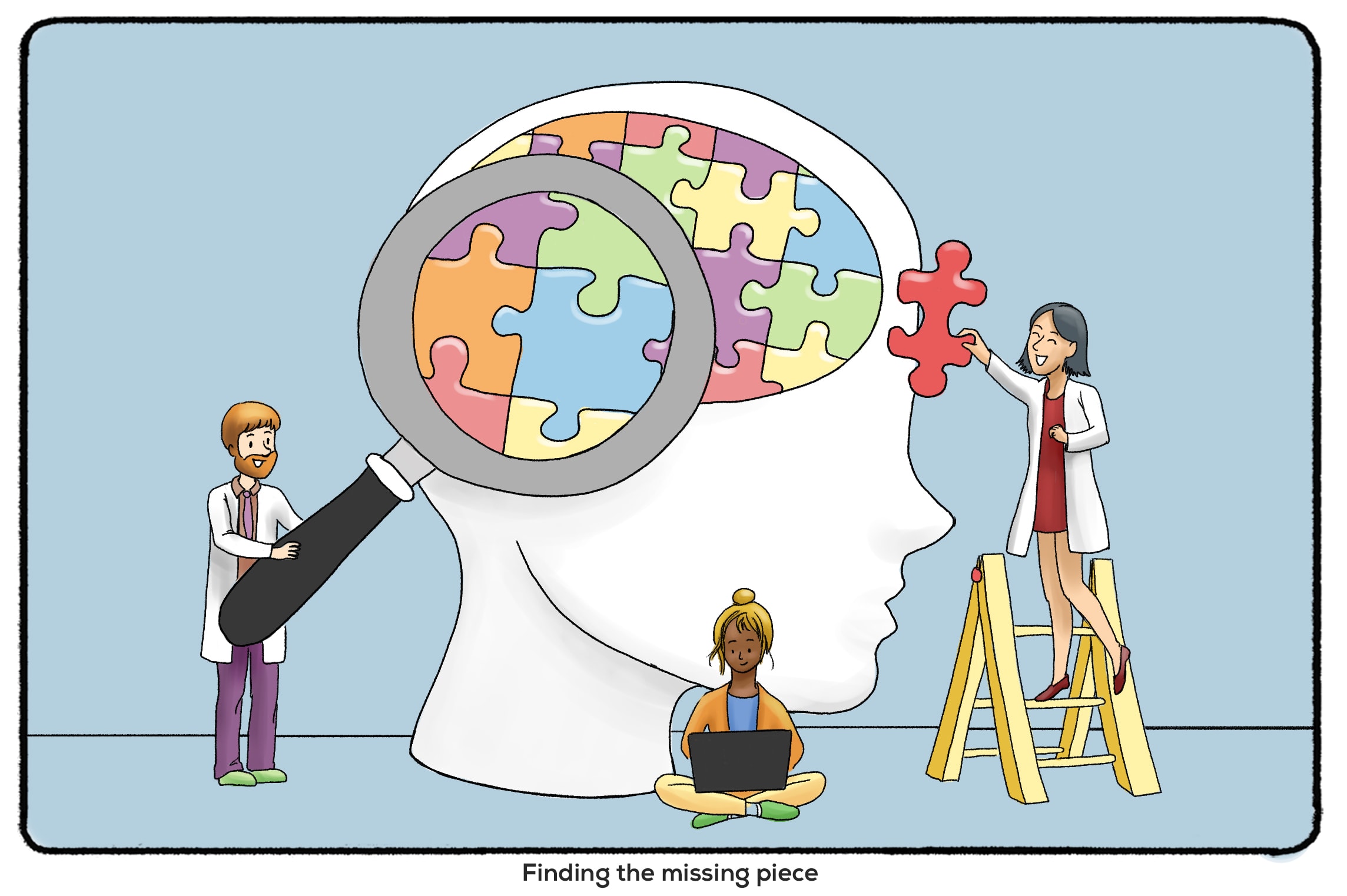Looking to take the free Big 5 Personality test online? Here's one that will take less than 10 minutes and requires no email!
What Are The Big Five Traits?
Personality psychologists created the Big Five traits to identify and categorize what brings us all as humans and separates us as individuals with individual personalities. The original Big Five traits are also known as the OCEAN Model. OCEAN stands for Openness, Conscientiousness, Extraversion, Agreeableness, and Neuroticism.
This is one of many attempts by personality psychologists to narrow down the traits that define all humans. In the past, these traits have ranged from 3 to thousands! The Big Five has, in recent years, appeared to be a "happy medium" that covered a broad spectrum of traits but did not overwhelm those studying personality.
Let’s look at each trait individually.
Openness to Experience
Most of these traits are self-explanatory. The Openness to Experience trait describes people who are curious about the world and comfortable trying new things. They enjoy creative activities and are more inclined to explore different or alternative ideas. People who score low on this scale rarely break out of their comfort zone. Different activities, routines, or ideas may make them feel uncomfortable.
Conscientiousness
More conscientious people tend to pay more attention to detail and put effort into organizing their everyday activities. They are more likely to plan every detail of a vacation itinerary or reread their work a handful of times before turning it in. People who score lower in terms of conscientiousness are more likely to let things happen without planning or organizing.
This is a good time to reiterate that a high score on these traits does not make you a “better” or a “worse” person. You may view conscientiousness as a positive or negative trait depending on your values and culture. It’s important to remember that personality tests will not tell you if you are a “good” person, just your traits and how they influence your decisions. Conscientiousness is the only Big 5 trait that predicts job performance across most jobs.
Extraversion
Extraverts are more likely to respond positively to stimuli in the outside world. They feel more comfortable around lots of people and things happening around them. Introverts, on the other hand, prefer to eliminate outside stimuli and focus inward.
People can also find these traits in the Myers-Briggs Type Indicator.
Agreeableness
More agreeable people are more willing to take action in order to make peace with others. Agreeable people are also more likely to be patient with others. They might sacrifice what they want for the sake of others or let go of anger. Researchers have put anger on the other side of the scale here. This trait still causes some debate in personality psychology; no one wants to be called a “disagreeable” person.
Neuroticism
This is the final Big Five trait, also known as “Emotional Stability” by other personality theorists. People who score high for neuroticism are more likely to experience heightened feelings of anxiety, paranoia, depression, or aggression. These feelings may have a large impact on the way that a person behaves or perceives the world.
Who Developed the Five Factor Model of Personality?

Many personality psychologists (Lewis Goldberg, Costa, McCrae, etc.) have had a hand in developing the Five Factor Model and the "Big Five." This research has taken place over decades, starting in the 1940s. It didn't really catch on until the 1980s.
Are the Big Five Traits Universal?
In almost all research, the Five-Factor Model of Personality has been universally credited throughout all cultures. This makes it one of the best personality tests to perform further research and create accurate behavior predictions. However, the "Big Five" has recently evolved.
Can You Change Your Big Five Score?
Many factors play into your personality and Big Five scores: age, life experience, culture, etc. Personality traits are rarely set in stone. Evidence shows that your Big Five may change throughout your life, whether you intend it or not!
Examples of Changes in Big Five Scores
- In high school, Jess scores low on conscientiousness. She is typically impulsive and doesn’t spend too much time planning or reviewing her work. Over the years, she has worked closely with people who are very detail-oriented and expect the same of her. Her habits in the workplace translate over to her habits at home. Years after graduating, her conscientious score was much higher than expected.
- Mark grew up very sheltered. His parents cautioned him about the outside world. Strangers were threatening, new places were dangerous, and life is best lived the same way, day by day. For this reason, Mark scored very low on openness to experience. Then, his job relocated him. Away from his hometown, family, and old friends, Mark was forced to take on new experiences. He found that his new routine, new hobbies, and new life were exciting! Later, he took the Big Five test and scored very high on openness to experience.
- As a child, Shonda was carefree. No new situations made her anxious, and she was generally optimistic. But as time went on, Shonda found that her anxiety was making more and more of an impact on her life. There was not one thing that caused the anxiety, but enough snowballed into a condition that held her back. This anxiety would cause her to score high in neuroticism.
What Is The Difference Between HEXACO and Big Five?

Personality psychology is always changing. Researchers have added a sixth trait to the Big Five model: honesty-humility. This addition has called for tweaks to the acronym. Researchers have added H, started to represent extraversion with an X, and changed Neuroticism to Emotionality. These six traits form the HEXACO model of personality.
Honesty-humility was added as the Big Five started to expand beyond American studies. Researchers began to assess whether or not the Big Five were present in languages other than English. As this research continued, they realized that all of the Big Five traits were present, and honesty and humility kept appearing as additional traits.
Some personality psychologists believe that the Honesty-Humility factor is the opposite of traits in the Dark Triad. A person who is more honest and humble is less likely to be narcissistic, psychopathic, or a Machiavellian leader. Not only does the addition of honest humility reveal a person’s tendency to tell the truth, and play by the rules, but it could also reveal who tends to be manipulative or a seriously negative influence.
Where to Find HEXACO and Big Five Tests
Ashton and Lee, the psychologists behind HEXACO, have a test on hexaco.org where you can see where you rank for each HEXACO trait (and see median scores from participants.) If you want to assess a friend’s HEXACO inventory, you can choose this option before you start the test. Psychologists are still collecting data related to the HEXACO inventory, so your results will be recorded and used in further studies. When you get your results, you can see a broken-down ranking of each element (and see your score for anxiety, patience, creativity, etc.) Many other tests also measure how you relate to each of the Big Five terms online.
How to Use The Big Five Test (Examples)
The Big Five and other personality tests based on theory are not just for contemplation. These tests have real-world applications. Consider using this test to get to know yourself, people in your life, and people worldwide!
Get To Know Yourself
The easiest way to learn the Big Five model is to take a test! See the results for yourself. You may find that the results are right on the money or reveal a truth about yourself that your friends have been trying to tell you for years! Did you think your agreeable or neuroticism score would be as high or low as it is? You don’t have to take the test too seriously. Don’t let the results change the course of your life. But enjoy getting to know what the answers reveal about your personality and behavior through the lens of the Five Factor model.
The Big Five test is one of many frameworks psychologists have developed to categorize and identify different personalities. If this is the first test you’ve taken, consider learning more about the Myers-Briggs or Type A vs. Type B tests. Compare your answers! What do these different approaches say about who you are, how you see the world, and how you interact with others?
Get To Know Your Team
Personality tests are a common team-building tool. Tests with extensive results, like the Big Five, work best when discussed among smaller teams. If you work with a group of 2-5 others, try taking this test and comparing your results.
Big Five test results reveal your personality traits and how you approach certain situations at work. For example, a high conscientious person (particularly orderliness and cautiousness) may take extra time to review their work and ensure a project will be presented up to their standards. Someone who is not high in those areas of conscientiousness but high in areas of agreeableness may present a rougher draft, expecting their coworkers to provide feedback so the final results are the best they can be. Unless these intentions are communicated, the two team members may clash.
Send this test around to your teammates and ask them to share their results and answer the following questions:
- Which of the Big Five traits best describes you at work?
- Which of the Big Five traits best describes you outside of work?
- What traits do you appreciate most from your team members?
- Based on your results, what is one thing you want your team to know about you?
The answers may surprise you, and that’s a good thing!
Consider The Experience of Others
We so often see the world from our viewpoint that we can fail to consider the viewpoints of others. But not everyone thinks and behaves the same way. Whether nature or nurture shapes us, there is no denying that every person is unique.
Look at your results and what they say about your personality. Then, think about what it might be like to take the test and get a completely different set of results. How might someone who is not as open to experiences see the world? When a very conscientious person starts their day, how might it look different than someone who is not conscientious? How would a more or less neurotic person like to be treated or treat others?
This is a fun exercise, but it can also help you be aware of why someone may behave in a certain way. Thinking about the varying levels of openness, conscientiousness, etc., may also help you avoid misunderstandings with people different from you. At the end of the day, most people just want to be treated with respect and kindness. And they probably deserve it, no matter what the results of their personality test say. Understanding another person’s perspective can help you meet them where they are and treat them the way they want to be treated.
Give these tests a try and see what the Big Five and HEXACO results say about you. Share these results with your friends and see if they agree. If you are surprised by your results or your peers’ personality assessments, it might be time for self-reflection and activities to learn your true self.

